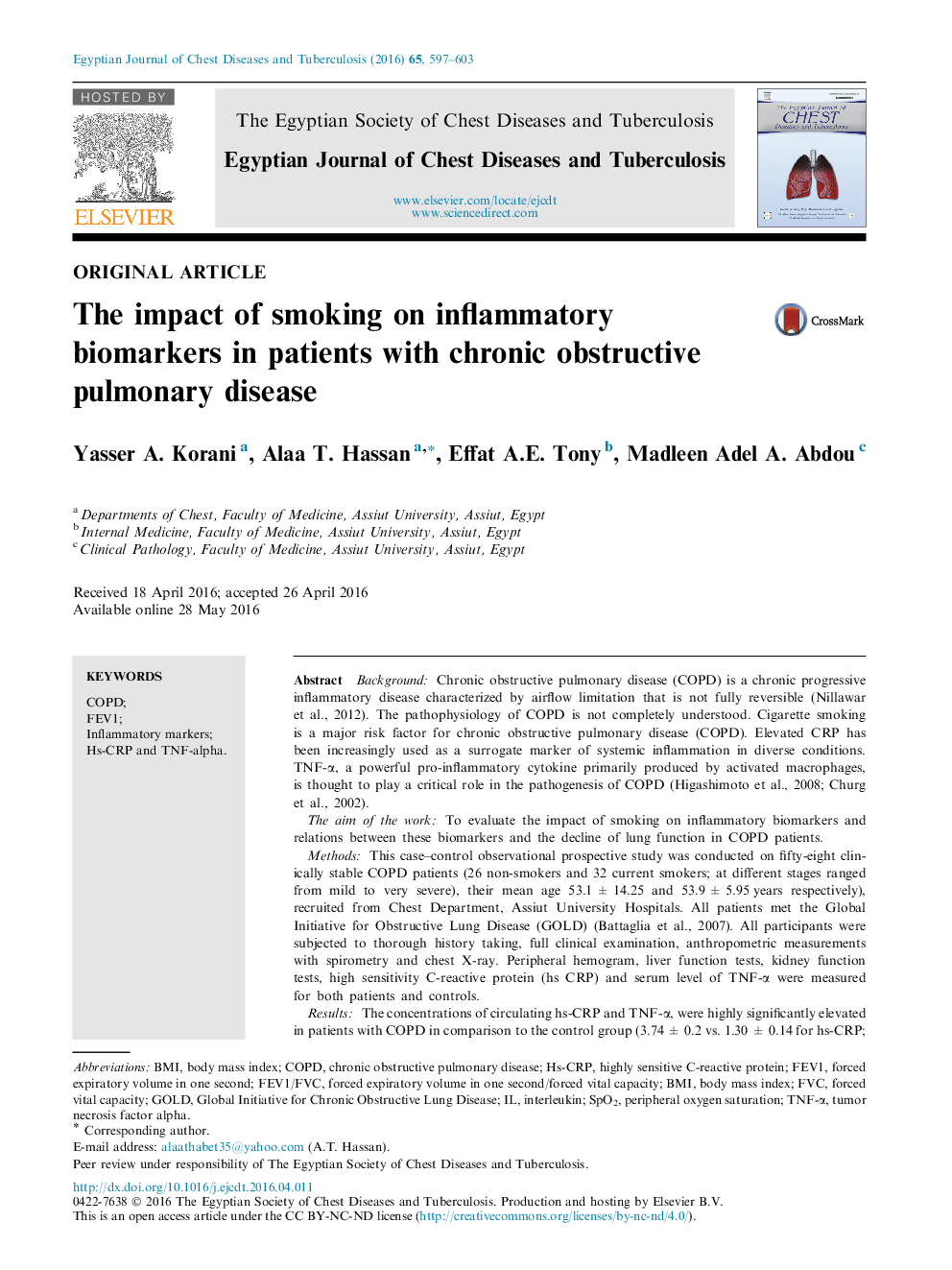| Article ID | Journal | Published Year | Pages | File Type |
|---|---|---|---|---|
| 3399820 | Egyptian Journal of Chest Diseases and Tuberculosis | 2016 | 7 Pages |
BackgroundChronic obstructive pulmonary disease (COPD) is a chronic progressive inflammatory disease characterized by airflow limitation that is not fully reversible (Nillawar et al., 2012). The pathophysiology of COPD is not completely understood. Cigarette smoking is a major risk factor for chronic obstructive pulmonary disease (COPD). Elevated CRP has been increasingly used as a surrogate marker of systemic inflammation in diverse conditions. TNF-α, a powerful pro-inflammatory cytokine primarily produced by activated macrophages, is thought to play a critical role in the pathogenesis of COPD (Higashimoto et al., 2008; Churg et al., 2002).The aim of the workTo evaluate the impact of smoking on inflammatory biomarkers and relations between these biomarkers and the decline of lung function in COPD patients.MethodsThis case–control observational prospective study was conducted on fifty-eight clinically stable COPD patients (26 non-smokers and 32 current smokers; at different stages ranged from mild to very severe), their mean age 53.1 ± 14.25 and 53.9 ± 5.95 years respectively), recruited from Chest Department, Assiut University Hospitals. All patients met the Global Initiative for Obstructive Lung Disease (GOLD) (Battaglia et al., 2007). All participants were subjected to thorough history taking, full clinical examination, anthropometric measurements with spirometry and chest X-ray. Peripheral hemogram, liver function tests, kidney function tests, high sensitivity C-reactive protein (hs CRP) and serum level of TNF-α were measured for both patients and controls.ResultsThe concentrations of circulating hs-CRP and TNF-α, were highly significantly elevated in patients with COPD in comparison to the control group (3.74 ± 0.2 vs. 1.30 ± 0.14 for hs-CRP; 33.88 ± 5.97 vs. 8.79 ± 0. 57 for TNF-α with p < 0.0001 for each) and the levels of measured TNF-α were significantly increased with the increased degree and severity of COPD and increased severity of smoking status. Regarding the smoking status of COPD patients, there was a highly significant difference for the measured TNF-α (53. 74 ± 9.52 versus 12.73 ± 1.20 with p < 0.0001) with no significant difference for the measured hs-CRP (3.87 ± 0.29 versus 3.58 ± 0.27 with p > 0.05). Interestingly, there were significant negative correlations between the levels of TNF-α and hs-CRP, and FEV1 in stages II, III, and IV of COPD.ConclusionsThe circulating levels of the inflammatory markers hs-CRP and TNF-alpha are significantly elevated in patients with stable COPD and these biomarkers could be used as predictor factors for severity of inflammation in COPD patients. Longitudinal studies evaluating the effects of smoking cessation on bronchial and systemic inflammation are needed to allow better understanding of these relationships and their consequences.
